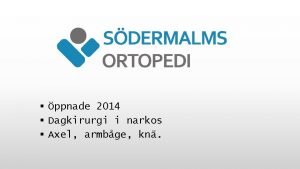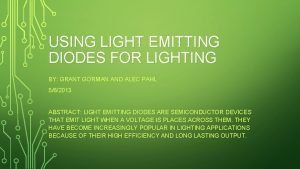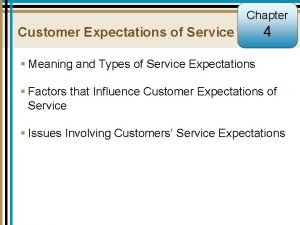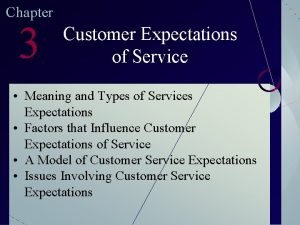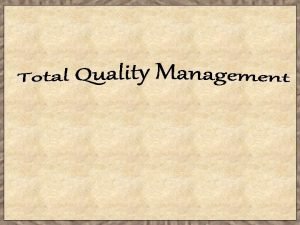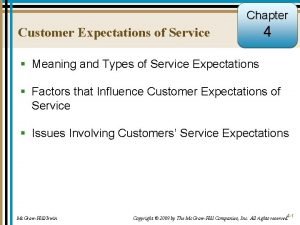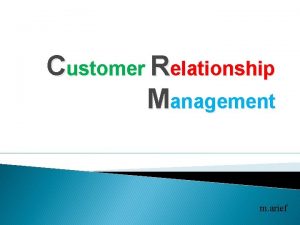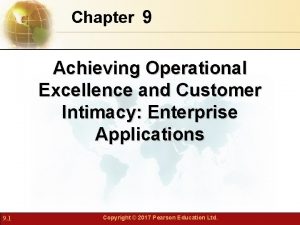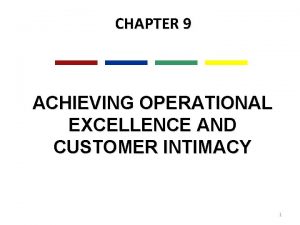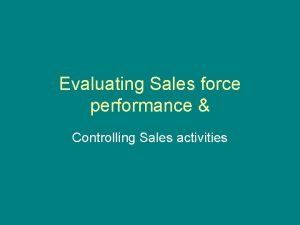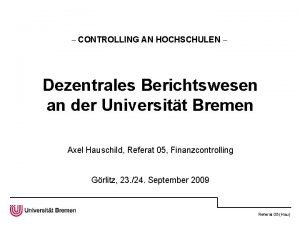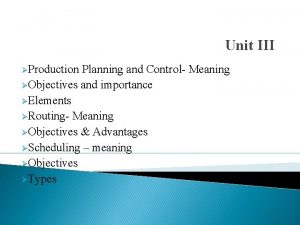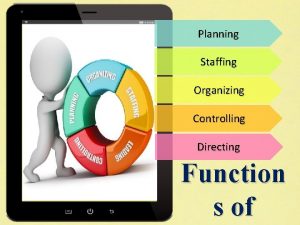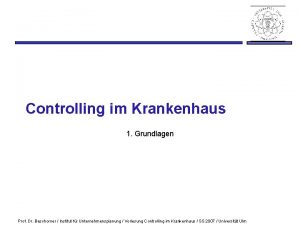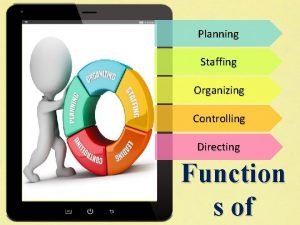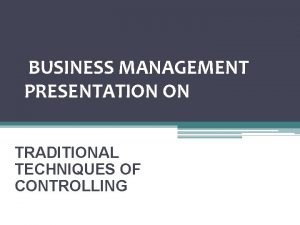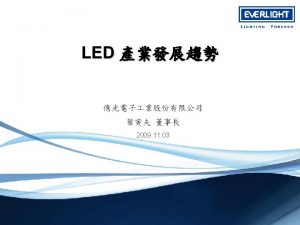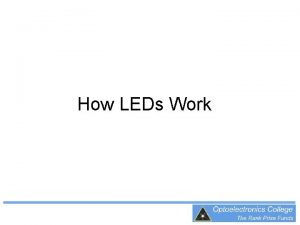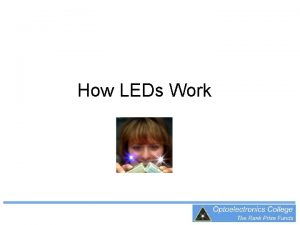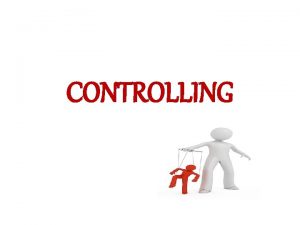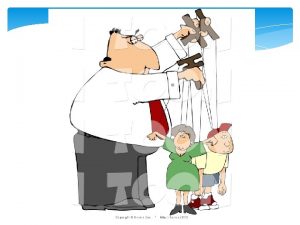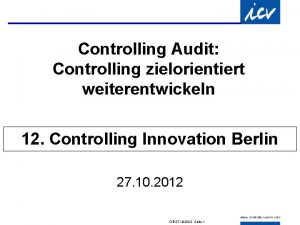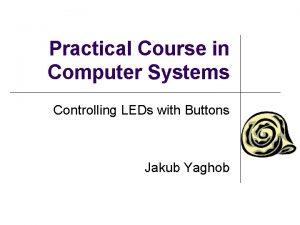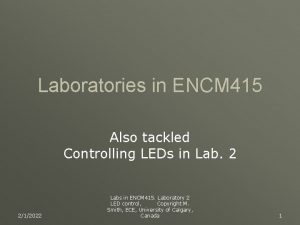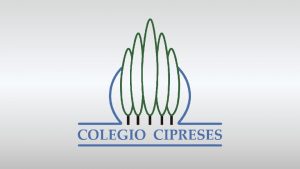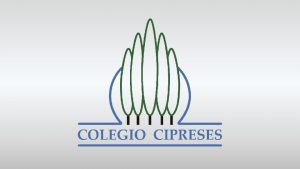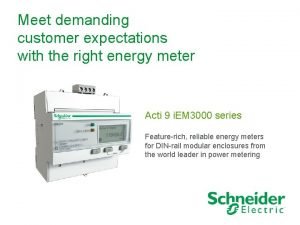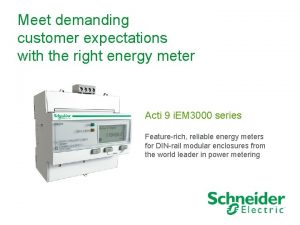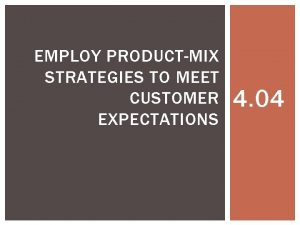Controlling LEDs to Meet Customer Expectations Copyright 2016




































- Slides: 36

Controlling LEDs to Meet Customer Expectations Copyright 2016 Lutron Electronics Co. , Inc. All rights reserved. Reproduction or display of this presentation, or any of the contents herein, without the express written consent of Lutron Electronics, is strictly prohibited by law.

Controlling LEDs to Meet Customer Expectations Lutron Electronics Co. , Inc. is a Registered Provider with The American Institute of Architects Continuing Education Systems. Credit earned on completion of this program will be reported to CES Records for AIA members. Certificates of Completion for non-AIA members are available on request. This program is registered with the AIA/CES for continuing professional education. As such, it does not include content that may be deemed or construed to be an approval or endorsement by the AIA of any material of construction or any method or manner of handling, using, distributing, or dealing in any material or product. Questions related to specific materials, methods, and services will be addressed at the conclusion of this presentation. Controlling LEDs to Meet Customer Expectations AIA/CES HSW /SD Program Number CLED 13 (1. 0 Learning Units) 2 22

Controlling LEDs to Meet Customer Expectations This presentation is protected by US and International Copyright laws. Reproduction, distribution, display and use of the presentation without written permission of the speaker is prohibited. © Lutron Electronics Co. , Inc. 2016 3 33

Learning Objectives • Describe the features and benefits of LEDs as a general illumination light source, and the applications that are best suited to LEDs • Explain the components of an LED system and how each of these components must be compatible with one another to ensure efficient, effective, and reliable operation • Compare existing control types and standards to identify the differences between power line, 3 wire, and low voltage control (analog and digital) • Recognize LED drivers as a critical component in LED lighting systems and identify their important characteristics 4

Agenda • LED Features, Benefits, and Challenges • LED Applications • Dimming Expectations • LED System Components • LED Drivers • LED Control Options 5

LED Features and Benefits • High Efficiency (up to 150 lumens/watt and improving) – 20 W LED or less can replace a 100 W incandescent • Reduced maintenance costs – 50, 000+ hour lifetime • Color temperature – 2700 K to 4500 K and beyond • Color Rendering – 90 CRI or higher is available • Immediate light output • No UV/IR radiation • No mercury, no lead 6

LED Challenges • System compatibility – Driver/LED array and driver/control compatibility are often confusing • Thermal management – Heat must be conducted away from LEDs effectively • Color consistency – Color shift in LED light output can occur over time – Products with the same color temperature can look different • Exaggerated claims • Total installed cost and first cost must be evaluated 7

Commercial LED Applications • LED technology is maturing rapidly, and products now exist for replacing any commercial fixture type: – Architectural Downlights – Hi-Bay Downlights – Cove Lights – Outdoor Lighting • When selecting a product you must be sure it is a comparable replacement both in lumen output and beam pattern 8

Residential LED Applications • LED technology is maturing rapidly, and products now exist for replacing any residential fixture type: – Downlights – Under Cabinet Lights – Decorative/Accent Lights – Sconces • Again, when selecting a product you must be sure it is a comparable replacement 9

LED Applications • LEDs are a versatile light source with a multitude of control options • Compatibility issues between products hinder LED lighting from becoming an easy application • LED lighting manufacturers must consider their control options in the design phase of their product • Lighting designers must consider their control options in their project design from the very beginning 10

Dimming Expectations Dimming: • Saves energy • Extends system life • Enhances ambiance • Provides space flexibility • Increases productivity • Provides safety and comfort 11

Dimming Expecations • The dimming expectations need to be defined by the designers and the end users • Some customers expect dimming to be similar to incandescent (well below 1%) • LED products should clearly specify their dimming performance as part of their specifications 12

Dimming Expectations There is a difference between measured and perceived light levels: Measured light: the amount of light as shown on a light meter Perceived light: the amount of light that your eye interprets due to dilation For example, 20% measured light = 44% perceived light 13

Dimming Expectations Lobby or Atrium: A 20% light level is acceptable for this application Residences and Restaurants: A 1% light level is necessary for these applications 14

Dimming Expectations LED dimming problems encountered commonly today: • • • Flicker Shimmer Pop-on Drop out Flicker Poor minimum light level These problems have been solved with existing light sources, why accept them with LEDs? 15

LED System Components LED components: • For general illumination, LED modules (or “LED engines”) are available from many companies including Xicato, Philips, GE, Osram and many others LED modules • These modules are then used within a lamp or a fixture, both of which are powered by a driver LED driver 16

LED System Components LED System Architecture: • LED Fixture External Driver Control (Dimming or switching) LED module Housing Luminaire (Fixture) • LED Lamp LED module Integral driver Control (Dimming or switching) Lamp 17

LED System Components Integrated LED (LEDi) Lamps: • LEDi lamps have screw-in bases in order to replace existing incandescent or CFL screw-in lamps • Compatibility with existing dimmers is often unknown • LEDi lamps always have integral drivers • LEDi lamps have a wide range of lighting output, color, and dimming performance, and therefore do not always meet customer expectations. Actual application mock-ups are always beneficial! 18

LED Technology LED Fixtures: • Many LED fixtures exist, ranging from traditional to unique LED-specific designs: • LED fixtures have an LED module mounted within the fixture housing • They may have an integral driver or a separate remotemounted driver (similar to a ballast or transformer) • Again, optical and dimming performance can vary widely 19

LED Drivers • The appropriate driver is determined by the electrical specification of the LED module and the design of the luminaire • Two types of LED drivers exist: – Constant Current – Constant Voltage • Different types of LED drivers are NOT interchangeable 20

LED Drivers Constant Voltage Output: • Provides a constant voltage (e. g. 12 V or 24 V) to the LED module(s) • Used when the number of luminaires or length of cove is variable and all controlled by one driver (usually external) • As LED loads are added, power increases (the specification of the driver determines the power limit) Constant Voltage Output 21

LED Drivers Constant Current Output: • Driver provides a constant current to the LED module • Applies when there is a single LED module paired with a single driver (usually within the luminaire) • The current output of the driver remains the same regardless of the power of the LED module Constant Current Output 22

LED Drivers Pulse Width Modulation (PWM) Output Dimming Method • Available for both Constant Current and Constant Voltage drivers • PWM dimming cycles the LED on and off (120 -1000+ Hz), reducing the average light output • Claimed Benefits: – Provides more precise control for shared parallel loads – Prevents color shift 23

LED Drivers Constant Current Reduction (CCR) Output Dimming Method • Applicable only for Constant Current drivers • CCR dimming reduces the current supplied to the LEDs, reducing the light output • Claimed Benefits: – No stroboscopic effects – Superior performance with long wire runs – Minimal EMI (electromagnetic interference) produced – Class 2 UL CCR requirements allow more output voltage than PWM 24

LED Drivers If you only remember two things, remember this: 1. The quality and design of the LED Driver determines the best possible dimming performance of the fixture or LEDi 2. Compatibility between the dimmer and the driver determines how well they will deliver the expected performance and lifetime together 25

LED Dimming Control Options LED System Architecture: Control Options LED Driver Control (Dimming or switching) LED module Housing Luminaire (Fixture) Control Options LED module Integral driver Lamp 26

LED Dimming Control Options Types of control: • Phase control • 3 -wire control • Low voltage control – Analog – Digital 27

LED Dimming Control Options Two types of phase control (120 V, 220 V, or 277 V): • Leading Edge/Forward Phase: – Incandescent – Magnetic low voltage transformers • Trailing Edge/Reverse Phase: – Electronic low voltage transformers • Confirm that the LED meets the minimum load requirements of the dimmer and does not exceed the maximum load because of inrush current and repetitive peak current • Contact the control and lamp manufacturer to confirm compatibility 28

LED Dimming Control Options Phase Control: • Typically used to control an LEDi lamp • Most installed incandescent (forward phase control) dimmers are not UL listed for LED loads, but forward phase control dimmers listed for LED loads are now available • Reverse phase control dimmers can have better performance, but they require a neutral wire connection • Dimmers can be wall-mounted or panel based, but compatibility between dimmer and LED load MUST be confirmed LED Lamp with integral driver Hot Neutral Phase Control Dimmer 29

LED Dimming Control Options 3 -Wire Controls: • 3 -wire controls are available for both small and large systems (dimmers can be wall-mounted or panel based) • Uses established wiring methods for fluorescent controls • Separate control and power feed allows for more precise control and high power quality Hot Neutral Dimmed Hot Switched Hot 30

LED Dimming Control Options Low Voltage Controls: • Analog – 0 -10 V • Digital – DALI or equivalent Digital Low Voltage Data System – DMX-512 31

LED Dimming Control Options 0 -10 Volt Control (analog): • Most 0 -10 V controls follow standard IEC 60929 – States that fixture (driver) sources current, and control sinks it – Alternate ANSI 0 -10 V standard is not compatible, and uncommon • Typically, line-voltage switching is also included with the control to switch the fixture off • 0 -10 V control signals can be made by wallbox dimmers, panel dimmers, or interfaces LED Fixture Hot Neutral 0 -10 V Control To next fixture in control zone 32

LED Dimming Control Options DALI (Digital Addressable lighting Interface) or equivalent Digital Low Voltage Data System: • DALI was developed in Europe as a fluorescent ballast standard (IEC 60929) • Allows for individual addressing of fixtures on two low voltage wires • Uses digital signals to send control information to the fixture • Allows for increased flexibility in wiring of power and control 33

LED Dimming Control Options DMX 512 (digital): • ANSI Standard (USITT DMX 512 -A) • Protocol used primarily for mixing colors and quickly-varying color intensity • Hundreds of channels supported • Applications: theatrical and color changing effects • Problematic when used in general illumination due to complicated wiring and lack of simple integration with standard building controls 34

Summary • LEDs are an increasingly important light source because of their long life, efficiency and flexibility and they are being used in every form of lighting. • An LED system includes a control, a driver, an LED module and a fixture or housing. The compatibility between these components is critical for properation in new applications or when retrofitting with existing controls. • There are important differences between phase control, 3 -wire and low voltage control types. Application and desired functionality dictate the proper control type to be used. • Selection of the proper LED driver is critical to meet the customer’s expectations of the control system. Dimmable drivers provide energy savings and the appropriate light levels for the space décor and function. 35

Questions?
 Leds global partnership
Leds global partnership Hyperlaxitet
Hyperlaxitet Alec leds
Alec leds N-h bond polarity
N-h bond polarity Till we meet till we meet at jesus feet
Till we meet till we meet at jesus feet Explicit customer expectations
Explicit customer expectations Dual customer expectation levels
Dual customer expectation levels Possible levels of customer expectations
Possible levels of customer expectations Desired and adequate service
Desired and adequate service Quality is meeting or exceeding customer expectations
Quality is meeting or exceeding customer expectations Desired and adequate service
Desired and adequate service Zone of tolerance for different service dimensions
Zone of tolerance for different service dimensions Beyond customer satisfaction
Beyond customer satisfaction Pengertian customer relation
Pengertian customer relation Customer relationship management and customer intimacy
Customer relationship management and customer intimacy Managing marketing information
Managing marketing information Customer relationship management and customer intimacy
Customer relationship management and customer intimacy Customer relationship management and customer intimacy
Customer relationship management and customer intimacy Controlling the sales force is an activity of
Controlling the sales force is an activity of Manager is someone who
Manager is someone who Non controlling interest
Non controlling interest Controlling workers compensation costs
Controlling workers compensation costs Acquisition of non-controlling interest
Acquisition of non-controlling interest Controlling uni bremen
Controlling uni bremen Narrative writing reveals something of importance.
Narrative writing reveals something of importance. Objectives of production planning
Objectives of production planning Air pollution consequences
Air pollution consequences Steps of staffing function of management
Steps of staffing function of management Analyselebenszyklus
Analyselebenszyklus Controlling expenses in housekeeping department
Controlling expenses in housekeeping department Contoh topik dan controlling idea
Contoh topik dan controlling idea Controlling
Controlling The controlling idea or the central insight of the story
The controlling idea or the central insight of the story Controlling kennzahlen
Controlling kennzahlen Planning organising staffing directing controlling
Planning organising staffing directing controlling Irrelevant sentence examples
Irrelevant sentence examples Traditional techniques of control
Traditional techniques of control

